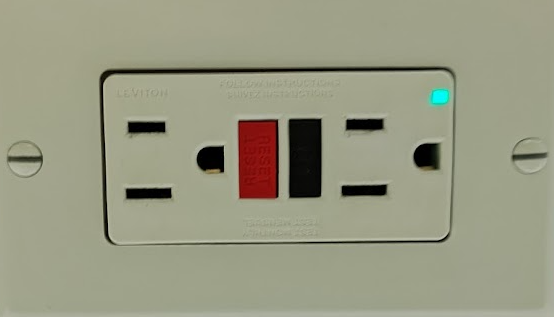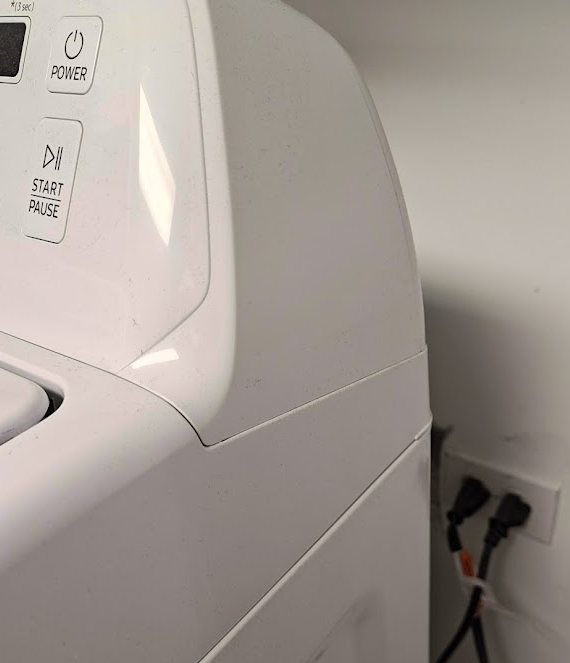What Is GFCI Protection NEC 210.8?

Whether you’re roughing in a new kitchen, wiring a basement sump pump, or trying to pass final inspection on a remodel, getting GFCI protection right is non-negotiable.
Too many jobs get red-tagged over GFCIs—and the worst part is, it’s usually avoidable.
As a former inspector and licensed supervising electrician, I’ve seen it all: reversed line/load terminals, hidden receptacles, and forgotten appliance outlets. In this post, we’ll break down GFCI protection in a way that’ll help you pass inspection, protect your clients, and avoid the costly callbacks.
What Exactly Does a GFCI Do?
A Ground-Fault Circuit Interrupter (GFCI) constantly monitors the current between the hot and neutral conductors. If it detects even a slight imbalance—think 4 to 6 milliamps—it trips the circuit in less than 1/40th of a second. That’s fast enough to prevent electrocution, not just shock.
Important: A GFCI is not a breaker. It doesn’t protect equipment from overloads. It’s a life-safety device.
Where GFCI Is Required (NEC 210.8)
The 2023 NEC has expanded GFCI requirements significantly. You now need GFCI protection for all 125V through 250V receptacles in the following residential areas:
- Bathrooms
- Garages (including door openers and freezers)
- Outdoors (even HVAC disconnects unless local TIA exception is adopted)
- Crawlspaces and Basements
- Kitchens – not just countertops—every receptacle
- Laundry areas – washing machines, gas dryers, utility sinks
- Within 6 feet of sinks or water sources
- Boathouses, indoor damp/wet areas, utility rooms, unfinished spaces
Code Reference: NEC 210.8(A)(1)–(12), NEC 210.8(D), NEC 422.5(A)
Don’t Forget the Appliances
Appliances now require dedicated GFCI protection too—even when hardwired. This includes:
- Dishwashers (210.8(D)(3), 422.5(A))
- Garbage disposals
- Microwaves, dryers, water coolers
- Sump pumps in basements/crawlspaces
Pro Tip: When the unit is hardwired or tucked into cabinetry, don’t bury the reset button. Use a GFCI breaker or faceless device mounted where it’s accessible.
Install Tip: Get the Line/Load Right
One of the most common reasons GFCIs fail inspection?
You wired the line and load terminals backwards.
It sounds basic, but it happens all the time—especially during rushed remodels or with replacements. Miswiring disables downstream protection, and the device may appear to “work” when it doesn’t protect anything at all.
📌 Field-tested fix: Label your wires before disconnecting the old device, and always test after install with a verified GFCI tester.
What “Readily Accessible” Actually Means

According to NEC Article 100, GFCIs must be readily accessible. That means:
- No ladders
- No tools
- No “you have to move the dryer to reset it” excuses
A GFCI behind a fridge, dishwasher, or washer isn’t compliant unless you use a breaker or load-side upstream protection
Avoid These Common Failures
- ❌ GFCI receptacle hidden behind an appliance
- ❌ Using a standard breaker when a GFCI breaker is required
- ❌ Forgetting protection for dishwashers or built-ins
- ❌ Thinking outdoor HVAC units are exempt (they’re not—unless local AHJ follows the TIA delay)
Bottom Line: GFCI Protection is About People, Not Just Passing Inspection
Let’s be honest—most of us just want to pass inspection and move on. But GFCIs are about more than compliance. They save lives. And with updated NEC rules, even seasoned pros need to double-check every install.
Want a shortcut to avoiding red tags?
- Know your NEC sections
- Don’t bury your reset buttons
- Use dual function breakers in combo GFCI/AFCI areas
Looking for a deeper dive?
My field-tested book Pass the Inspection: GFCI & AFCI Code Requirements Made Easy breaks this all down room-by-room with NEC citations, inspection tips, and red flag fixes.
Get the complete breakdown of GFCI & AFCI code requirements in my practical field guide:
👉 Mastering GFCI & AFCI Requirements – Pass Your Inspection the First Time
If you’re also working on branch circuit protection, make sure to check out AFCI Protection NEC 210.12 — it’s just as easy to get flagged for wiring mistakes there.